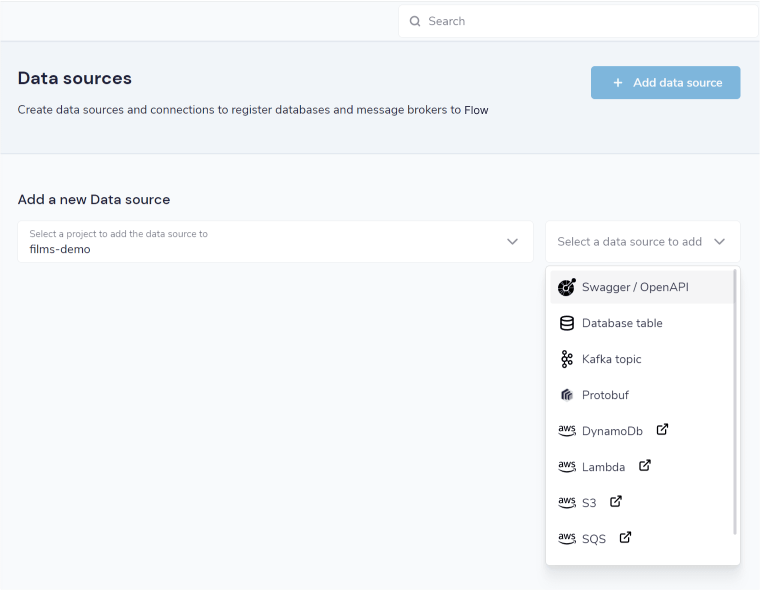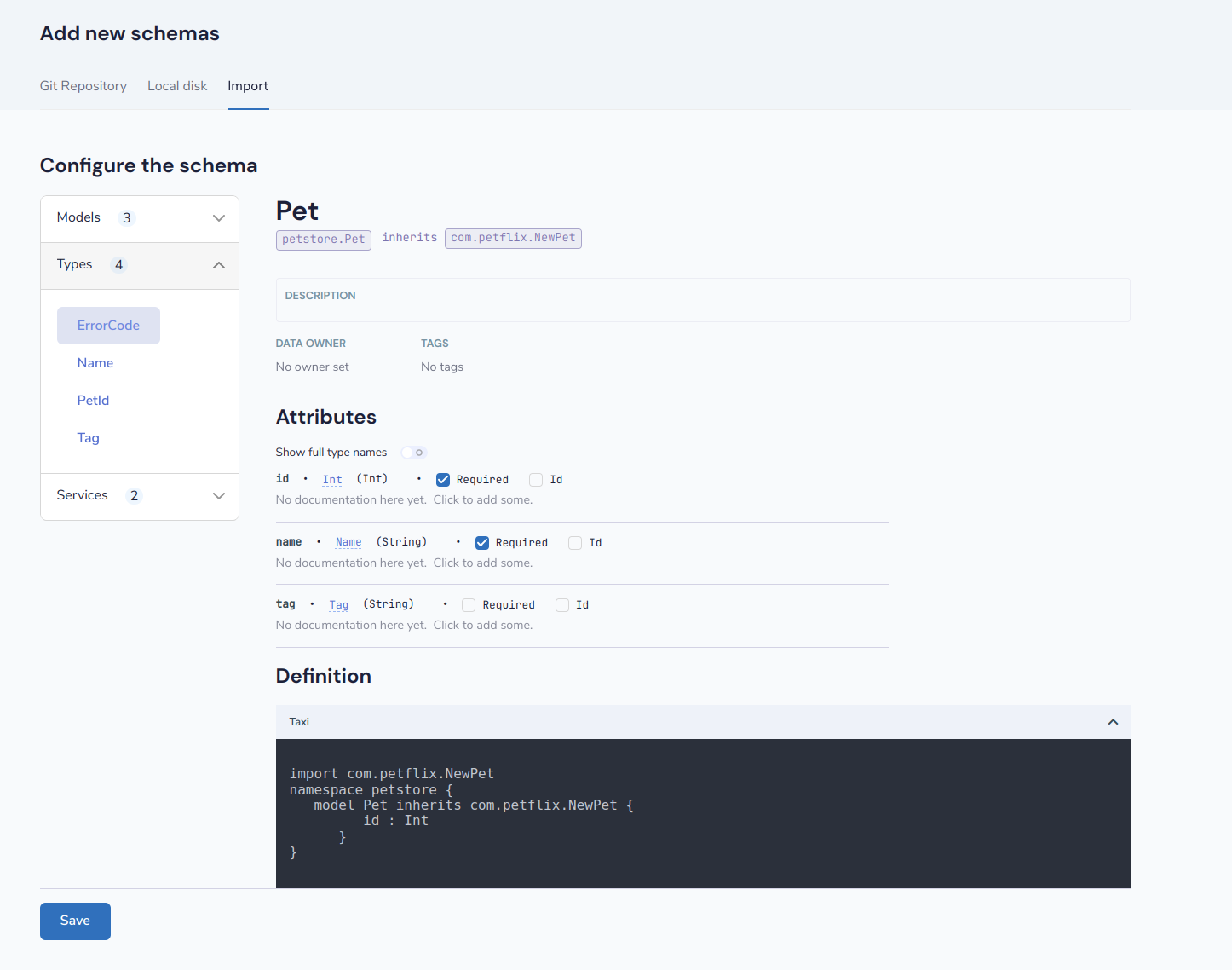Use OpenAPI to describe your services
Flow can use OpenAPI specs to understand what APIs exist, and how to call them.
Flow uses Semantic schemas to describe how data relates between systems. For OpenAPI, this means enriching return types and input parameters with metadata to describe them semantically.
To do this, we embed Taxi metadata within the OpenAPI specs.
Add Taxi annotations to OpenAPI specs
Taxi annotations use a custom x-taxi-type block within OpenAPI specs.
Example:
x-taxi-type:
# The name of the type
name: com.acme.MyType
# Optional. Indicates if the type should be created if not already present.
create: falseThe create element is optional, and overrides the default behavior.
If create is set to false, then schemas which attempt to publish types that aren’t already defined on the schema server
are rejected as compilation errors.
This is to prevent accidental typos.
However, the default behavior for create is different between response models and attribute types:
| Entity type | Default create behavior |
Impact |
|---|---|---|
Model (Response type) |
|
By default, if the model isn’t already present within the schema, it’s created |
Attribute |
|
By default, if an attribute type isn’t already present within the remote schema, then the OpenAPI spec is rejected |
Describe response types
Response models returned from API calls can be enriched to include semantic metadata.
Assign Taxi type names to models
You can optionally define a custom type name for response types being published to Flow. If omitted, then the type name is inferred from the rest of the schema.
components:
schemas:
Pet:
# Assign a Taxi type name to the model.
# Optional
x-taxi-type:
name: petstore.Pet
# Everything else is standard OpenAPI spec...
allOf:
- $ref: '#/components/schemas/NewPet'
- required:Add type annotations to attributes
Enrich attributes with semantic type metadata
components:
schemas:
NewPet:
required:
- name
properties:
name:
x-taxi-type:
name: petstore.Name
type: string
tag:
x-taxi-type:
name: petstore.Tag
type: stringBy default, it’s expected that types referred to in x-taxi-type within attributes have already been defined on the schema server, as part of your
core taxonomy.
However, if you are intentionally publishing new types from your OpenAPI spec, then set create to true:
components:
schemas:
NewPet:
required:
- name
properties:
name:
x-taxi-type:
name: petstore.Name
# petstore.Name will be created if not present
create: true
type: stringDescribe service parameters
Inputs into services can also be enriched, to annotate the semantic data required.
Simply add a x-taxi-type annotation to each input, containing a name attribute with a reference to the name of the type from your core taxonomy.
## ... OpenApi spec trimmed...
paths:
/pets/{id}:
get:
description: Returns a user based on a single ID, if the user does not have access to the pet
operationId: find pet by id
parameters:
- name: id
in: path
description: ID of pet to fetch
required: true
schema:
type: integer
format: int64
x-taxi-type:
name: petstore.PetId # <-- Name of type from core taxonomyPublish OpenAPI specs to Flow
Once you have added Taxi annotations to your OpenAPI spec, you’re ready to publish it to Flow.
| Before you can import an OpenAPI spec into Flow, ensure you have configured an editable Schema source - either a local disk repository or a Git repository. Be sure to enable editing of the repository when adding it. This lets Flow store the converted OpenAPI spec, with some additional metadata that it creates when importing. |
Import through the UI
-
Choose Data Sources in the left navigation bar, then Add data source.
-
Select a project to import into, then choose Swagger / OpenAPI from the data source dropdown list.

-
Either provide the OpenAPI spec file directly, or enter a URL to load the spec from
-
Provide a default namespace. (eg:
com.petflix.pets). Services from your OpenAPI spec are imported into this namespace -
If your OpenAPI spec doesn’t define a base URL (ie.,:
servers/url), then specify one. All paths in the OpenAPI spec are treated as relative to this path -
Click Configure
Preview your imported schema

Your imported OpenAPI spec will be available for you to browse, to make sure everything looks correct.
Any types that have been defined as create: true within the Yaml spec should appear within the Types section.
Services and operations should’ve been created for all endpoints within your OpenAPI spec.
At this point, you can edit types (by clicking on the pencil icon next to the type name) to further refine your schema. Once you’re happy, click Save and the OpenAPI spec will be imported.
